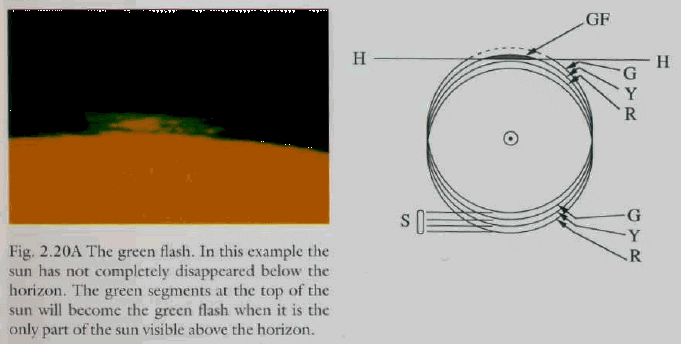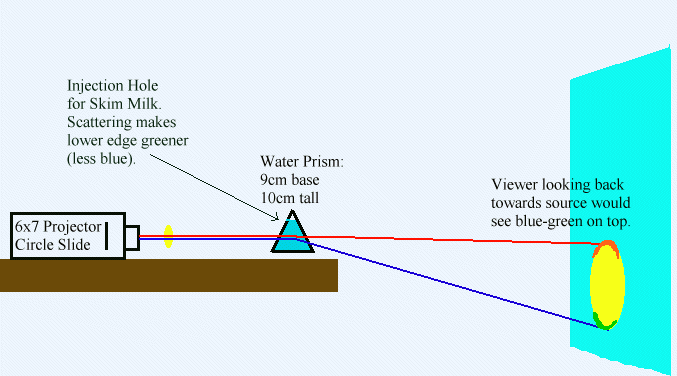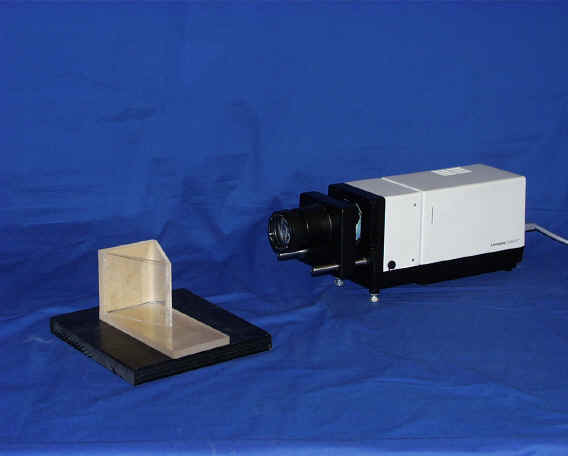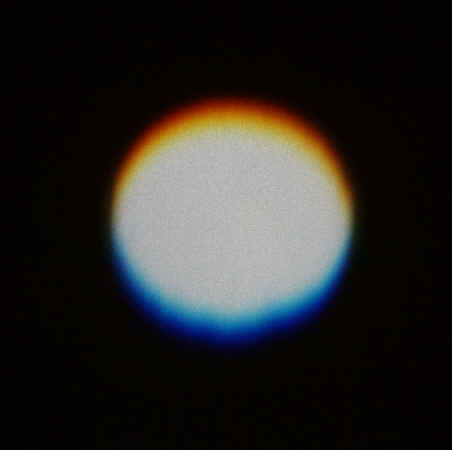
THE GREEN FLASH : ILLUSTRATE EDGE COLORATION OF A CIRCULAR BEAM BY REFRACTION. GREENING OCCURS BY SCATTERING OUT THE BLUE LIGHT.
The green flash, or the greening of the top of the setting sun, or of rising Venus, is a good natural example of the effects of refraction and scattering in the atmosphere.

Image and schematic of an actual "green flash"

Layout of the demonstration. We use a plexiglass prism filled with water to represent the atmosphere. The wide base represents the dense lower atmosphere and the narrow upper region represents the thin upper atmosphere.
Start the experiment with a circular slide in the projector (to create a circular beam). Shine it on the screen then shine it through the prism. The beam bends down (why?) but also color separates around the rim.
With clear water in the container the edges are blue-green and red-orange. After showing this put drops of skim milk into the prism (up until there is so much absorption you cannot see the beam). The milk scatters out blue light so the lower rim of the image goes more greenish.

It is important to discuss the idea of virtual sources and how the color ordering in the vertical inverts when you take a position looking into the beam, vs. looking at the screen from behind the source.

Actual apparatus (horizontal prism shown, newer version uses vertical prism)

Image on the screen (without skim milk added).
©2000. John Hart, University of Colorado